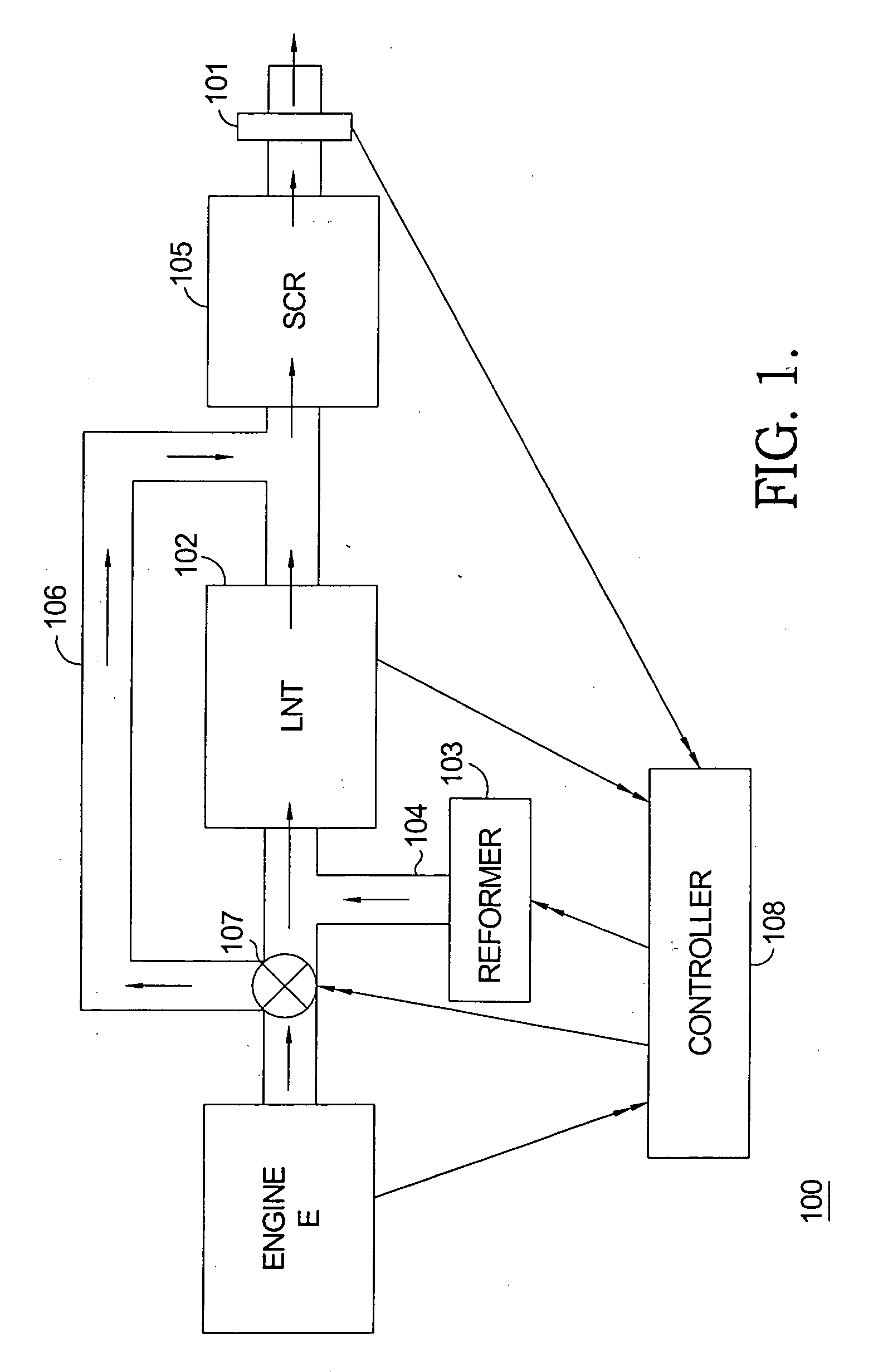Engine exhaust emission control system providing on-board ammonia generation
an exhaust system and ammonia generation technology, applied in the direction of machines/engines, mechanical equipment, chemistry apparatus and processes, etc., can solve the problems of high engine-out emissions of nox and pm, limited acceptance of compression-ignition engines and direct-injection spark-ignition engines, and low engine-out emissions of co and h
- Summary
- Abstract
- Description
- Claims
- Application Information
AI Technical Summary
Benefits of technology
Problems solved by technology
Method used
Image
Examples
Embodiment Construction
[0019] The exhaust emission control system of the present invention provides on-board ammonia generation and includes an upstream 3-way bypass valve, a lean NOx trap (LNT), and a selective catalytic reduction (SCR) catalyst. Reformate from an on-board reformer is injected into the LNT to react with NOx accumulated thereon, converting it to ammonia and thereby regenerating the LNT. During this process of LNT regeneration and accompanying ammonia production, the exhaust flow is directed by the upstream valve around the LNT and into the downstream SCR catalyst. When the valve is repositioned to allow the exhaust to again pass through the LNT, the ammonia generated in the LNT is directed to the SCR catalyst to promote NOx reduction there.
[0020] The following chemical reactions occur in the various components of the exhaust emission control system of the present invention:
Reformer: diesel fuel+air→H2+CO
LNT: 2NO+5H2→2NH3+2H2O
SCR catalyst: 6NO+4NH3→5N2+6H2O
[0021] Referring to FIG. 1, ...
PUM
 Login to View More
Login to View More Abstract
Description
Claims
Application Information
 Login to View More
Login to View More - R&D
- Intellectual Property
- Life Sciences
- Materials
- Tech Scout
- Unparalleled Data Quality
- Higher Quality Content
- 60% Fewer Hallucinations
Browse by: Latest US Patents, China's latest patents, Technical Efficacy Thesaurus, Application Domain, Technology Topic, Popular Technical Reports.
© 2025 PatSnap. All rights reserved.Legal|Privacy policy|Modern Slavery Act Transparency Statement|Sitemap|About US| Contact US: help@patsnap.com


